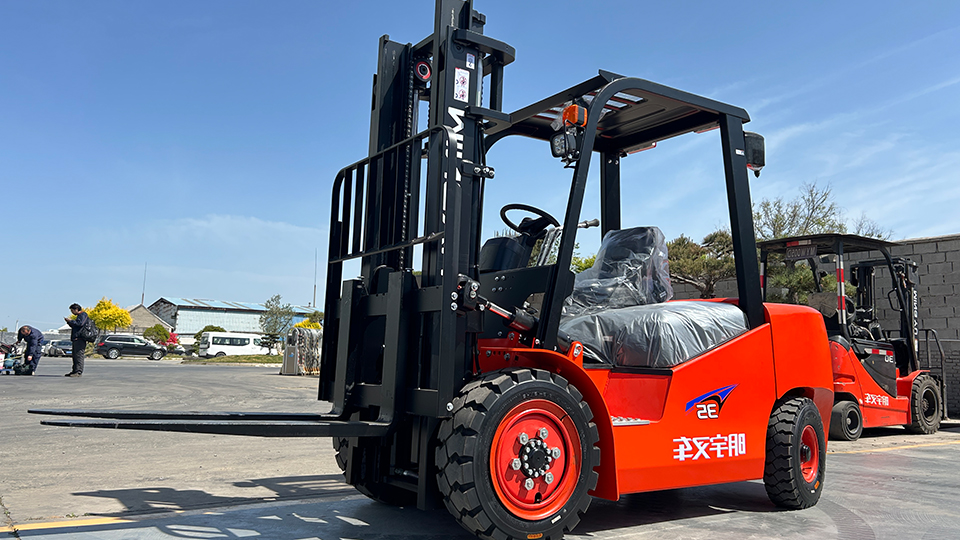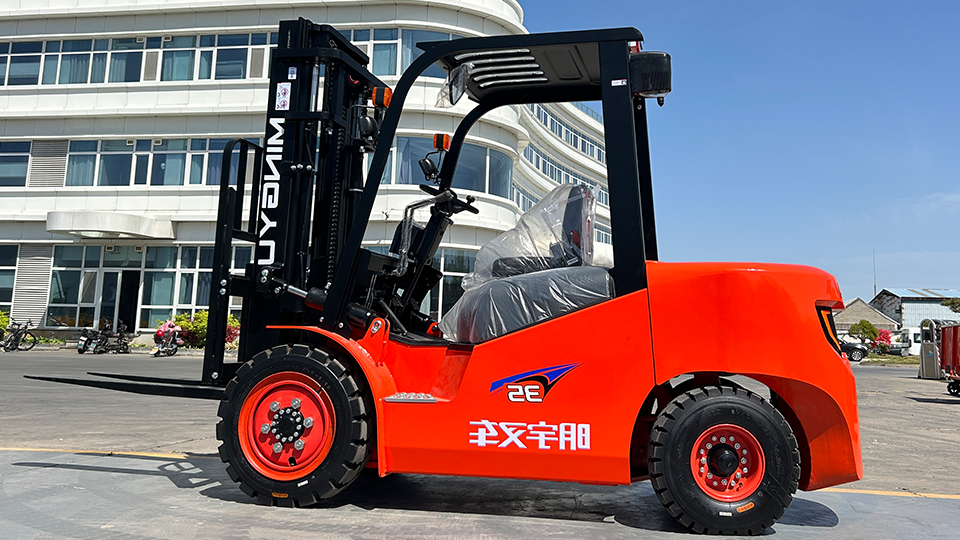
Limited Experience: Trainees with some limited exposure to forklifts or similar machinery may require less time, but their existing skills still need to be assessed, and any knowledge gaps addressed.
How Long is Forklift Training? Unpacking the Time Investment for Safe Operation
The ubiquitous forklift, a workhorse of countless industries, from warehousing and logistics to construction and manufacturing, plays a critical role in material handling. However, the power and maneuverability of these machines come with inherent risks if not operated with skill and caution. This underscores the paramount importance of comprehensive forklift operator training. A fundamental question for both employers and prospective operators is: How long does forklift training actually take?
The answer, unfortunately, isn't a simple, fixed duration. The length of forklift training is a dynamic variable influenced by a confluence of factors, including regulatory requirements, the trainee's prior experience, the complexity of the equipment, the specific workplace environment, and the chosen training methodology. This article will delve into the various elements that dictate the duration of forklift training, explore the different phases involved, and provide insights into what constitutes an adequate time investment for cultivating competent and safe forklift operators.

The Regulatory Foundation: OSHA's Performance-Based Approach
In the United States, the Occupational Safety and Health Administration (OSHA) sets the regulatory framework for powered industrial truck operator training under 29 CFR 1910.178(l). Notably, OSHA adopts a performance-based approach rather than mandating specific training hours. The regulation emphasizes that employers must ensure each operator is competent to operate a powered industrial truck safely, as demonstrated by successful completion of training and evaluation.
This performance-based standard means that the duration of training should be dictated by the time it takes for an individual to achieve the required level of competency. There is no magic number of hours that automatically satisfies OSHA's requirements. Some individuals with prior experience or a natural aptitude may grasp the concepts and demonstrate proficiency more quickly, while others may require more time and practice.
Key Factors Influencing Training Duration
Several key factors contribute to the variability in forklift training duration:
1. Trainee's Prior Experience and Skill Level:
No Prior Experience: Individuals with no prior experience operating forklifts or similar heavy equipment will naturally require the most comprehensive and time-intensive training. They need to grasp fundamental concepts, develop basic operating skills, and build confidence through ample practice.
Limited Experience: Trainees with some limited exposure to forklifts or similar machinery may require less time, but their existing skills still need to be assessed, and any knowledge gaps addressed.
4. Training Methodology and Format:
The chosen training approach significantly affects the overall duration:
In-House Training: Conducted by an employer's own personnel, the duration can vary widely depending on the trainer's experience, the comprehensiveness of the materials, and the availability of equipment and dedicated training areas.
External Training Providers: Third-party training companies often offer structured programs with set curricula and durations. These programs can range from a few hours to multiple days depending on the scope.
Blended Learning (Online and Practical): Combining online theoretical instruction with hands-on practical training can optimize time efficiency while ensuring comprehensive coverage. The practical component's duration will still depend on individual competency.
5. Trainee's Learning Pace and Aptitude:
Individuals learn at different paces. Some trainees may grasp concepts and demonstrate proficiency quickly, while others may require more time, repetition, and individualized attention. A competent trainer will adapt the training to accommodate different learning styles and ensure everyone reaches the required level of competency.
Typical Time Allocation for Forklift Training Phases
A comprehensive forklift training program generally encompasses three key phases, each contributing to the overall duration:
1. Formal Instruction (Classroom/Theory):
This phase involves the delivery of theoretical knowledge through lectures, videos, written materials, and discussions. Topics typically covered include:
OSHA regulations and employer responsibilities.
Forklift fundamentals (types, components, stability principles).
Pre-shift inspection procedures.
Safe operating procedures (starting, stopping, steering, traveling, load handling).
Potential hazards and how to avoid them.
Fueling/charging procedures.
Maintenance and reporting requirements.
The duration of this phase can range from 2 to 8 hours, depending on the complexity of the equipment and the depth of the material covered. Online modules can sometimes reduce the in-person classroom time.
2. Practical Training (Hands-on Operation):
This is the most crucial phase, where trainees gain hands-on experience operating the specific types of forklifts they will be using under the direct supervision of the trainer. This phase involves:

Demonstrations by the trainer.
Trainee practice on basic maneuvers (starting, stopping, steering, maneuvering in open areas).
Practice with load handling (picking up, transporting, stacking, and unstacking different types of loads).
Navigating simulated workplace scenarios and potential hazards.
The duration of practical training is highly variable, depending on the trainee's prior experience, the complexity of the equipment, and their rate of skill acquisition. It can range from 4 to 24 hours or more of dedicated hands-on practice. For novice operators on complex equipment, several days of practical training may be necessary.
3. Evaluation (Performance Assessment):
Once the formal and practical training is complete, the trainer must evaluate the operator's competency. This involves observing the operator performing various tasks safely and efficiently in the workplace. The evaluation should assess their:
Pre-shift inspection skills.
Safe operating techniques.
Load handling proficiency.
Awareness of hazards and safe responses.
Compliance with workplace rules and procedures.
The evaluation process itself may take 1 to 2 hours per operator, but the time spent leading up to the evaluation (i.e., the duration of formal and practical training) is what determines whether the operator is likely to pass.
Estimating Total Training Time
Considering the various factors and phases, here are some general estimates for initial forklift training duration:
Walkie Pallet Jacks/Stackers (No Prior Experience): 4 - 8 hours total (1-2 hours theory, 3-6 hours practical).
Counterbalance Forklifts (No Prior Experience): 8 - 24 hours total (2-4 hours theory, 6-20 hours practical).
Reach Trucks/Order Pickers (No Prior Experience): 12 - 32 hours total (3-6 hours theory, 9-26 hours practical).
Experienced Operators (Certification on New Equipment): 4 - 12 hours total (1-3 hours theory, 3-9 hours practical).
Refresher Training (Experienced Operators): 2 - 4 hours total (primarily practical observation and review of any changes).
These are just estimates. The actual time required may be shorter or longer depending on the individual and the specific circumstances. The paramount goal is to ensure the operator demonstrates competency, regardless of the hours spent.
The Importance of Quality Over Quantity
It's crucial to emphasize that the quality of forklift training is far more important than simply adhering to a minimum number of hours. A rushed or inadequate training program, even if it meets a perceived time constraint, can lead to poorly trained operators who are more likely to cause accidents.
A comprehensive and effective training program will:
Be tailored to the specific types of forklifts and the workplace environment.
Utilize engaging and effective training methods.
Provide ample opportunity for hands-on practice under supervision.
Thoroughly evaluate the operator's competency before authorization.
Include regular refresher training and evaluations to maintain proficiency.
Conclusion: Investing the Necessary Time for Safety
The question of how long forklift training takes doesn't have a definitive answer in terms of a fixed number of hours. OSHA's performance-based approach rightly emphasizes the achievement of competency. The duration of training will vary based on the trainee's experience, the complexity of the equipment, the specific workplace, and the chosen training methodology.
Employers must recognize that adequate forklift training is not a mere formality to be completed as quickly as possible. It is a critical investment in the safety of their employees, the integrity of their operations, and the prevention of costly accidents and injuries. By prioritizing thorough and competency-based training, even if it requires a more significant time commitment upfront, employers can cultivate a skilled and safety-conscious workforce, ultimately leading to a more productive and incident-free workplace. The true measure of forklift training lies not in its duration, but in its effectiveness in producing safe and competent operators.
Name: selena
Mobile:+86-13176910558
Tel:+86-0535-2090977
Whatsapp:8613181602336
Email:vip@mingyuforklift.com
Add:Xiaqiu Town, Laizhou, Yantai City, Shandong Province, China